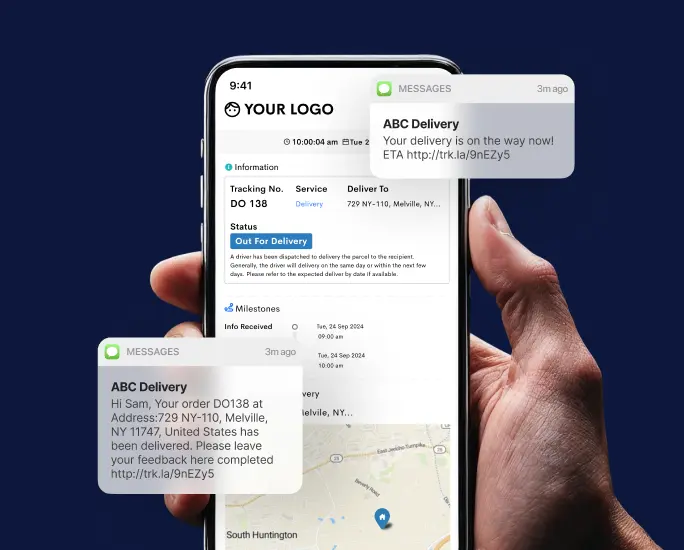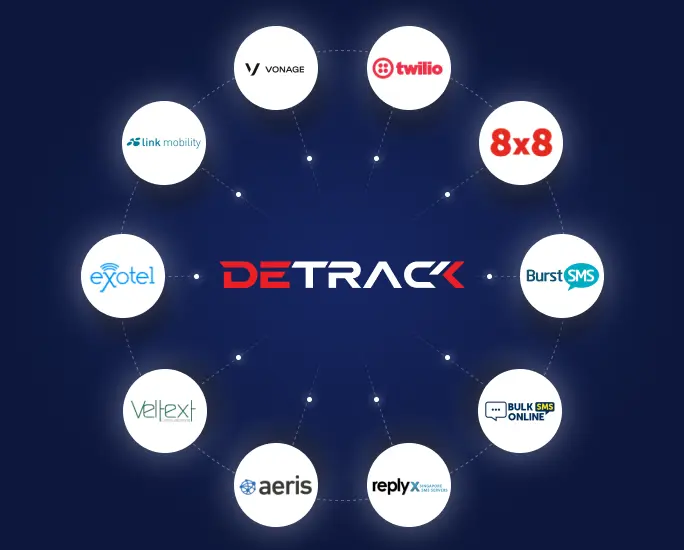It is always satisfying when your business and e-commerce sales begin to increase. But do you have a solid delivery management system? Customer satisfaction and sales will quickly decrease if you do not get your delivery strategy right.
In the holiday season alone, Americans ship around 3 billion packages. Large businesses may have a greater capacity to spend money on their systems to manage deliveries, but smaller companies also benefit from using delivery management software to meet consumer needs. Read on for everything you need to know for your business.
What is Delivery Management?
Delivery management is when you use logistical processes to transport goods from one location to another in an efficient way. The on-demand economy is growing, and businesses need to plan their deliveries to meet increasing demands. A logistics or delivery manager is usually in charge of this role, but it could be someone else on the team for smaller businesses.

What is a Delivery Management Software?
Delivery management software, also known as DMS, helps optimize an organization. It is one of the best tools to meet customer demand and stay in control of delivery processes. DMS manages the delivery life cycle from start to finish on one platform. There are different types of software available, including app-based solutions that allow you to schedule deliveries and manage jobs.
Benefits of Delivery Management Software
DMS manages all aspects of delivery, allowing you to improve practices, from centralizing your operations to improving communications. Read on for the top eight benefits of a delivery management software.
1. Streamline Processes
One of the best delivery practices is to centralize your delivery management system. DMS platforms group all aspects of delivery in one place, meaning you can streamline tasks without worrying about task repetition and delays.
Paper document trails of deliveries can end in disaster with a significant risk of human error. DMS reduces this risk and automates manual processes so that staff can focus on other tasks. The result is better visibility, efficiency, control, and oversight of delivery management practices.
2. Better Communication
Don’t worry about getting a hold of delivery workers or dealing with miscommunications. Delivery management software automatically finds the nearest drivers for jobs. This makes it easy for drivers to input remarks or notes for delivery. You can also quickly re-assign drivers and advertise jobs, which reduces time spent tracking down the right person for the job.
Customers can use delivery tracking to follow their orders, making communication more efficient. Feedback from customers will also help improve your system.
3. Higher Customer Retention
Delivery tracking is an important step in leaving customers satisfied. DMS is one of the best ways to provide them with a quality delivery service while maintaining professionalism.
With little effort, you can pay more attention to consumers to make sure they feel valued and important. The result? Better customer retention, reviews, and glowing recommendations.
4. Delivery Tracking
Delivery tracking is not just for customers. A DMS allows you to track your driver fleet, and this is essential to keep track of their location. You won’t have to worry about dishonesty from your drivers with these real-time tracking options.
Driver data will help you get a better understanding of your employee’s strengths and weaknesses. You will give more accurate and personal feedback, as data will cover factors such as time and distance traveled for deliveries.

5. Route Optimization
Many businesses could benefit from improving their route management. Often, drivers travel further than they need to or use inefficient routes due to different delivery locations.
Delivery management software addresses this issue and ensures routes are as efficient as possible. This works by letting you access GPS data on traffic conditions and driver locations, meaning quicker deliveries.
6. Order Control
A centralized DMS allows you to manage orders better. With an overview of orders and deliveries, you can quickly flag any order delays or other potential issues. Stay on top of scheduling deliveries, driver job assignments, and delivery tracking on one platform instead of multiple platforms or paper trails.
It can get extremely difficult during busy seasons when orders begin to multiply and you do not have a solid delivery management software. This can be easily solved with a user-friendly system that allows anyone, regardless of tech expertise, to quickly adapt to improved processes.
7. Save Money and Time
Delivery management system is all about saving money and time. Software tools are the best solution to make this possible. You can reduce delivery times, improve delivery efficiency, and communication while streamlining tasks in a single app.
You will also save money, as there is less risk of delays due to human error. Plus, you will have better customer retention, fewer fuel costs, and less dependency on third-party delivery aggregators. Become self-sufficient with your deliveries and be in complete control.
8. Insightful Analytics
One of the top benefits of a DMS is that you receive accurate data that can help improve your business. Learn what areas you need to work on and flag any patterns with delivery delays or other issues. You will have access to driver performance and other delivery information to control delivery management fully. You can also access historical data, which you can refer to during employee feedback or business planning.
The software is also user-friendly and visual, making it easy to understand, regardless of your level of tech know-how. You will have the best understanding of your peak times and seasons, so you anticipate how your delivery needs may change in the future.

Implementing Delivery Management
Implementing delivery management systems can seem daunting, but breaking down the process into manageable steps can make it easier. Here are five steps businesses can take to implement delivery management successfully:
Map Out The Delivery Process
Mapping out the delivery process is a crucial step in implementing delivery management. This step involves creating a visual representation of the steps involved in the delivery process, from the time an order is placed to the time it is delivered to the customer.
This map helps to identify areas where the delivery process can be optimized and improved.
By creating a visual representation of the delivery process, businesses can identify areas for optimization and improvement, prioritize improvements, and implement strategies to enhance efficiency and improve customer satisfaction.
Choose Delivery Management Software
The next step is to choose the right delivery management software. There are several software options available in the market that cater to different types of delivery management needs.
These software tools help businesses to automate various tasks such as tracking, dispatching, capturing proof of delivery, and optimizing delivery routes.
The choice of software should be based on the specific needs of the business, the size of the operation, and the level of automation required.
Train Staff On Tools And Best Practices
Training staff on tools and best practices is a critical component of implementing delivery management.
The first step in training staff is to identify the specific tools and software that will be used to manage deliveries. This may include delivery management systems, GPS tracking systems, and communication tools such as mobile devices and messaging apps.
Training on best practices should also be provided to employees. This may include training on topics such as time management, communication skills, and customer service.
Time management training can help employees to prioritize their tasks and manage their time effectively to ensure timely delivery of goods.
Track And Manage Deliveries
Tracking and managing deliveries is a critical component of implementing delivery management. This step involves using software tools to track the status of deliveries in real-time and manage the delivery process to ensure timely and accurate delivery.
The first step in tracking and managing deliveries is to assign a unique identifier to each delivery, such as a tracking number. This enables the delivery to be tracked throughout the delivery process, from the time it is picked up to the time it is delivered.
Once the deliveries are assigned unique identifiers, they can be tracked in real-time using software tools. These tools allow businesses to monitor the status of each delivery, including its location, estimated delivery time, and any updates to the delivery status. It even can help take proof of delivery.
Collect And Analyze Data
Collecting and analyzing data is an essential step in implementing delivery management.
This step involves gathering and analyzing information related to delivery times, delivery success rates, customer satisfaction, and other metrics that can help businesses to identify areas that need improvement.
The data collected can then be used to optimize the delivery process and improve overall efficiency.
There are several ways to collect data related to delivery management. The most common method is to use software tools that allow for real-time tracking of deliveries.
These tools can provide data on delivery routes, delivery success rates, and other metrics that can be used to analyze and optimize the delivery process.
Other methods of data collection include customer feedback surveys, manual tracking of deliveries, and data collected from third-party logistics providers.
Important Delivery Management KPIs to Track
Tracking key performance indicators (KPIs) is essential to effectively manage deliveries and improve overall delivery performance. The following are some important Delivery Management KPIs to track:
- Driver Productivity: Driver productivity is a critical KPI to track as it directly affects driver schedules.
- Route Efficiency: Route efficiency is a crucial KPI to track as it can have a significant impact on fuel usage, delivery times, and overall costs. This KPI measures the distance traveled, the number of stops made, and the time taken to complete a route.
- Fuel Usage: Fuel usage is an important KPI to track as it can significantly impact overall delivery costs. This KPI measures the amount of fuel consumed per mile or per delivery and can help businesses identify areas where fuel consumption may be excessive.
- Delivery Times: Delivery times are a critical KPI to track as they directly impact customer satisfaction. This KPI measures the time taken to complete delivery from the time an order is placed to the time it is delivered to the customer.
Detrack Streamlines Delivery Management From Start To Finish
Looking to streamline your delivery management process and improve overall delivery performance? Look no further than Detrack!
With our easy-to-use software, you can map out your delivery process, track and manage deliveries in real time, and collect and analyze data to identify areas for improvement.
Plus, with our comprehensive training and support, you can ensure that your staff is equipped with the tools and best practices to succeed.
Don’t wait any longer, sign up for Detrack today and start streamlining your delivery management from start to finish!










